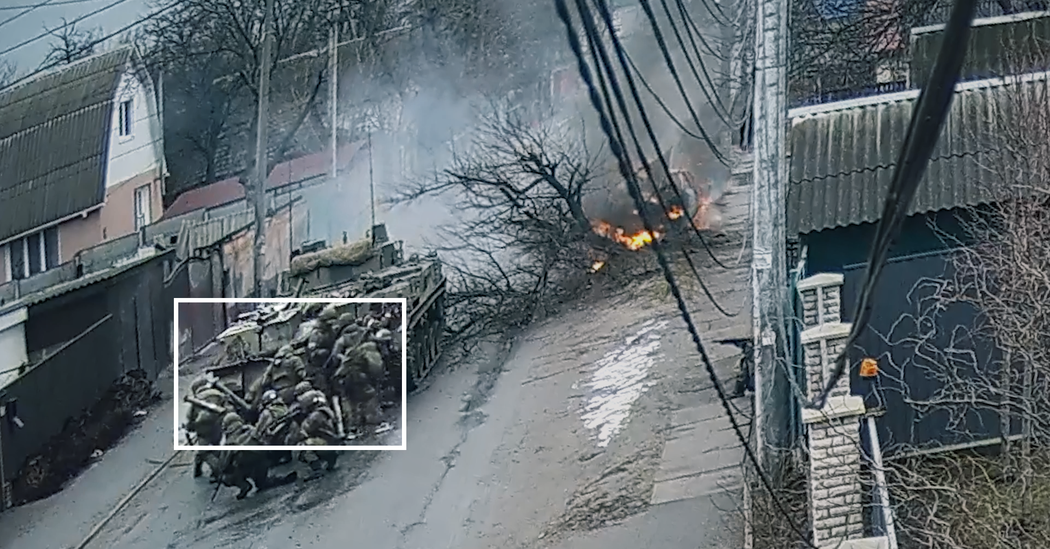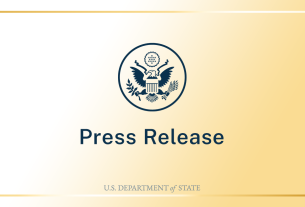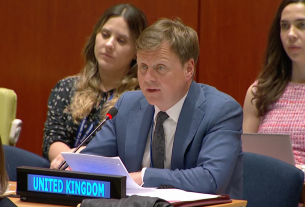[ad_1]
This investigation was reported and produced by Yousur Al-Hlou, Masha Froliak, Dmitriy Khavin, Christoph Koettl, Haley Willis, Alexander Cardia, Natalie Reneau and Malachy Browne.
When videos and photos emerged in April showing bodies of dozens of civilians strewn along a street in Bucha, Ukrainians and the rest of the world voiced horror and outrage. But in Russia, officials had a completely different reaction: denial.
President Vladimir V. Putin dismissed the gruesome scene as “a provocation,” and claimed that the Russian Army had nothing to do with it.
But an eight-month visual investigation by The New York Times concluded that the perpetrators of the massacre along Yablunska Street were Russian paratroopers from the 234th Air Assault Regiment led by Lt. Col. Artyom Gorodilov.
The evidence shows that the killings were part of a deliberate and systematic effort to ruthlessly secure a route to the capital, Kyiv. Soldiers interrogated and executed unarmed men of fighting age, and killed people who unwittingly crossed their paths — whether it was children fleeing with their families, locals hoping to find groceries or people simply trying to get back home on their bicycles.
We identified 36 of the Ukrainian victims killed along Yablunska Street. Read more about their final moments.
Times reporters spent months in Bucha after Russian forces withdrew, interviewing residents, collecting vast troves of security camera footage and obtaining exclusive records from government sources. In New York, Times investigators analyzed the materials and reconstructed the killings along this one street down to the minute. Some of the most damning evidence implicating the 234th included phone records and decoded call signs used by commanders on Russian radio channels.
It all points to a brazen and bloody campaign that turned a quiet suburban street into what residents now call the “road of death.”
Historically, journalists and investigators relied on a single photograph or video to expose wartime atrocities. In 1992, Time magazine published a photo of an emaciated prisoner in Bosnia on its cover. Almost 20 years later, a video captured the execution of captured Tamil Tiger fighters in the final days of Sri Lanka’s civil war.
What differentiates the evidence discovered in Bucha are the scale and detail that link a single unit and its commander to specific killings, with possible implications for ongoing investigations. The International Criminal Court (I.C.C.) is already investigating possible war crimes and other atrocities in Ukraine.
“This kind of digital evidence is a sea change, especially compared to past investigations such as in the former Yugoslavia,” said Matthew Gillett, a senior lecturer at the University of Essex who previously worked at international criminal courts. “If any Ukraine cases end up at an international court such as the I.C.C., it has to have a significant video component.”
Here are some of the main takeaways of the investigation.
A Paratrooper Unit Emerges as the Culprit
While various military units were present in Bucha — and the death toll across the city reached over 400 — The Times identified the 234th Regiment, a paratrooper unit based in the city of Pskov in western Russia, as the main culprit in the Yablunska Street killings. Airborne units like this are considered some of the best trained and equipped in the Russian military. Evidence of the 234th’s involvement includes military equipment, uniform badges, radio chatter and packing slips on munition crates. Military experts from Janes and the Institute for the Study of War provided insights about Russian armored vehicles and their markings as well as tactical operations seen in the visual evidence.
Phone Records as Digital Fingerprints
Residents in Bucha said that when Russian soldiers interrogated them, they often seized their phones. Suspecting the soldiers may also have taken the phones of victims, our reporters obtained from Ukrainian authorities a database of all calls and messages placed from the Bucha region to Russia during March. As we interviewed victims’ relatives, we collected their phone numbers and checked if they were in the database. A chilling pattern emerged: soldiers routinely used the phones of victims to call home to Russia, often only hours after they were killed.
By analyzing the phone numbers dialed by Russian soldiers and uncovering social media profiles associated with their family members, The Times confirmed the identity of two dozen paratroopers as members of the 234th Regiment. In many cases, we interviewed their relatives and spoke to some of the soldiers themselves, two of whom confirmed they were in the 234th and served in Bucha. We cross-referenced our findings with personal data sourced from leaked and official Russian databases provided by the Center for Advanced Defense Studies, a Washington, D.C., nonprofit group focused on global security.
Mothers, Fathers, Children: Ordinary Citizens as Victims
The Times identified — for the first time — three dozen people who were killed along Yablunska Street in March. We reviewed death certificates for most of these victims, and the predominant cause of death was gunshot wounds.
The victims were residents of Bucha or neighboring towns, from all ages and professions. Among the victims killed by Russian paratroopers were 52-year-old Tamila Mishchenko and her 14-year-old daughter, Anna, on March 5. They were among four women fleeing Bucha when Russian soldiers fired on their blue minivan.
Nearly all the victims we identified on Yablunska Street were civilians or Ukrainian P.O.W.s. Killing them could be prosecuted by the International Criminal Court and deemed war crimes under international humanitarian law. Because of their systematic and widespread nature, the killings in Bucha could also amount to crimes against humanity. Russia has not joined the I.C.C. and is unlikely to cooperate on any potential future cases that involve Russian soldiers.
The Killings Were Not Random Acts of Violence
The victims on Yablunska Street did not die in the crossfire between Russian and Ukrainian forces, nor were they mistakenly shot in the fog of war. Our investigation shows that Russian troops intentionally killed them, apparently as part of a systematic “clearing” operation to secure the path to the capital. Dozens of civilians were shot dead. In other cases, men suspected of links to the Ukrainian military were rounded up and executed.
Dereliction in the Chain of Command
Lt. Col. Artyom Gorodilov, the regiment commander at the helm of the 234th, oversaw operations of the paratrooper unit in Bucha. Times investigators obtained documents that confirmed the call sign he used when communicating over the radio with his troops. Security cameras along Yablunska Street captured some of this radio chatter, establishing that Lt. Col. Gorodilov was in command, and two soldiers in the 234th who served in Bucha confirmed in interviews that he was there.
After Russian troops retreated from the Kyiv region, Lt. Col. Gorodilov received a promotion to colonel in April from the then-head of the airborne forces, Col. Gen. Andrey Serdyukov. The ceremony was held days after the shocking images from Bucha emerged.
Neither General Serdyukov nor Colonel Gorodilov’s immediate superior at the time, Maj. Gen. Sergey Chubarykin, has publicly announced any investigations into the carnage in the town despite the global outrage over the images. As superior officers, they ultimately answer for the actions of the forces under their command. By neither stopping nor investigating the atrocities in Bucha, they could ultimately bear responsibility for them.
The Russian Ministry of Defense, the Russian Embassy in Washington and Colonel Gorodilov did not respond to requests for comment.
Reporting was contributed by Evan Hill, Ishaan Jhaveri and Julian Barnes. Translations and research by Aleksandra Koroleva, Oksana Nesterenko and Milana Mazaeva.
[ad_2]
Source link



